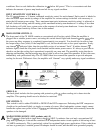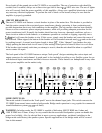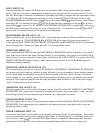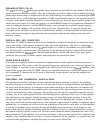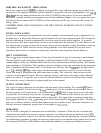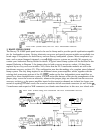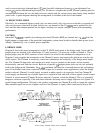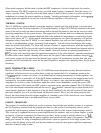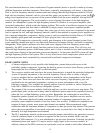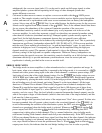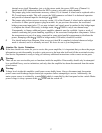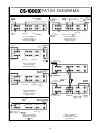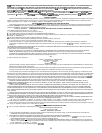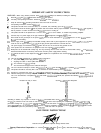
Often studio engineers feel the need to defeat the DDT compressor, for fear it might color the sound in
studio listening. The DDT compressor is only activated when clipping is imminent. Until this occurs, it’s
simply a passive friend. The only reason the defeat switch is there in the first place is to allow check-out
technicians to evaluate the power amplifier at clipping. Valuable performance information, such as
power-
supply ripple and regulation, can only be assessed when an amplifier is allowed to clip.
THERMAL SYSTEM
The CS 1000X has a unique thermal system that employs a tunnel-type heat sink design to provide maxi-
mum cooling for the 24 power transistors (12 for each channel). A single 100 CFM fan mounted on the back
panel of the unit provides an almost unrestricted airflow through the tunnel to provide the lowest possible
operating temperature for the power devices. This approach is so efficient that even continuous operation
into 2 ohms will not cause a thermal shutdown unless the ambient air temperature is considerably higher
than normal (above 40” C). Under normal intermittent applications, low-speed fan operation will provide
adequate cooling. Since the CS 1000X is a two-channel amplifier, but only one fan is employed, the fan
circuitry is an independent system, separately fused internally. You will notice that the heat sink compo-
nents are divided horizontally. The lower half contains Channel A output transistors, while the upper half
belongs to Channel B. The fan provides equal cooling for both channels. Each channel has separate built-in
thermal sensors and fault logic circuitry. If one channel’s heat sink reaches an operating temperature of
60°C
its logic will cause high-speed fan operation irrespective of the other channel’s operating temperature.
In other words, either channel’s heating will control the fan speed. Under normal continuous usage at
full-
rated power output into the rated load, the thermal logic system will continuously monitor heat sink tem-
peratures and will automatically select the fan speed required to maintain safe operating limits for the power
transistors.
HIGH TEMPERATURE LIMITS
Because of the very efficient design of the CS 1000X heat tunnel dissipation system, thermal shutdown
conditions will almost never occur unless there is truly an external fault. For continuous operation, the
CS
1000X
requires a source of cool air. As an added help in locating mismatched or shorted speakers, the
DDT active LED is a powerful tool. If this LED flashes continuously at relatively low-output power levels
(indicated by low-power readings on the LED array), it is almost a sure sign that the amplifier loading
impedance is too low in value, or that there might be a short circuit. Remember, usually the power LED
array should reach 100% before the DDT system is activated on any particular channel. The CS 1000X also
has a fail-safe thermal mechanism built into the unit. If
ither
channel’s thermal logic system should fail to
cause thermal shutdown in that channel or if the fan itself should fail, this fail-safe system will shut down
the entire amplifier, just as if you had turned off the power switch. This is just one more protection that
Peavey has incorporated into this unique amplifier as a backup system. If this should ever occur, immedi-
ately seek professional help at an authorized Peavey service center.
PASSIVE CROSSOVER
The purpose of a traditional high-level passive crossover found inside most speaker systems is to separate
the low-frequency material from the program and feed it to the woofer (low-frequency driver), and to
separate the high-frequency material from the program and feed it to the tweeter (high-frequency driver).
This crossover is connected between a power amplifier and the speakers, and, as its name implies, is made
up entirely of passive components (no transistors or tubes). Such a system is usually referred to as
“full-
range,”
which simply means that the power amplifier must handle the full range of frequencies. There are
many good reasons for using a biamplified professional system as opposed to a full-range system. One
reason is that the biamp system will provide more headroom with the same power amplifier complement
than that of the full-range system.
14



